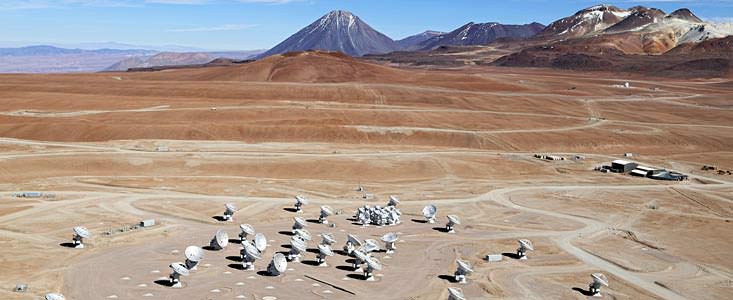A new film called The View From Mars takes a look ALMA (Atacama Large Millimeter Array), the huge international telescope project that was inaugurated in Chile this week. It is located in the Atacama Desert, the driest place on Earth and an area that bears a striking resemblance to the Red Planet.
But the conditions there, with clear, dry skies, are perfect for astronomy. ALMA’s moveable group of 66 giant antennas do not detect visible light like conventional optical telescopes. Instead they work together to gather emissions from gas, dust and stars and make observations in millimeter wavelengths, using radio frequencies instead of visible light—with no need for darkness, so the stars can be studied around the clock. With these tools, astronomers will soon be able to look billions of years into the past, gazing at the formation of distant stars and galaxies.
“In doing so,” says filmmaker Jonathan de Villiers, “they’ll build a clearer picture of how our sun and our galaxy formed.”
Here is part one; you can see part 2 at this link.


I climbed Mt. Whitney in my youth. @ 14,500 feet. The Alma array is up at +/-16,404 feet. 14.5K’ took MY breath away! Living and working at 16.4K’ even occasionally am sure, takes it’s toll! Pant.. pant.. pant… plop~
Am trying to imagine what ten years of ALMA data will do for the astronomical community specifically and mankind in general. The BIGGEST hit of all of course would be to find ETI signals somewhere in the data.. Never say never? Good luck ALMA! Did I mention that I had an aunt named Alma? Eeyup..
Like Mt. Whitney (I climbed in my forties) acclimatization helps. Also oxygen at a slow rate through nasal tubes makes heavy labor tolerable. Though struggling on my way back down an old timer I met taught me forced breathing where exhaling through pursed lips can increase the partial-pressure of oxygen uptake somewhat the way that airline pressurization does. It does require a strong diaphragm muscle.